Text and photos ©2009
When my great-grandparents, Sarah Sims and Ebenezer Beynon, emigrated from Wales in 1869, they brought with them an engraving of their hometown of Merthyr Tydvil (Tydfil in Welsh), that has hung on our walls since before I was born. It’s an idyllic depiction of a river, a stone bridge, and a castle on the hill. I’ve always been fond of the engraving, but I had never visited Wales until I was invited, at the behest of Visit Wales, to join a group of journalists to report on The Great British Cheese Festival, in Cardiff in south Wales.
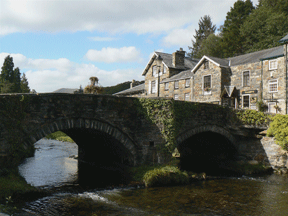
Bridge over Afon Colwyn in the village of Beddgelert, Wales, photo by Scott W. Clemens
As our focus was ostensibly culinary, in our research we happily ate at casual pubs, as well as highly rated restaurants; we visited farms and fisheries, markets and a cookery class. On our way to the festival we took a week meandering down the length of the small country, staying at historic inns, stopping at castles and historical sites, a Male Choir rehearsal, the Welsh language center, a fabulous golfing destination, a distillery, a Celtic jewelry designer, and a gold mine. We also took a couple of railway excursions .
How does one relate the breadth of the Welsh landscape? Rather than follow the itinerary I think it best to divide this narrative into its areas of interest (click on the links above and below). But first, a few general notes on Wales: It’s a semi-autonomous region of Britain, having been granted its own Assembly in 1999. At 125 miles east to west, and 155 miles north to south, it’s about the size of Massachusetts. It boasts 750 miles of coastline and the second tallest mountain in Britain (Mt. Snowdon at 3,560 feet). Its legends (possibly historical) include that of King Arthur.
Human habitation stretches thousands of years back to Neolithic times, when people passed freely from the continent during the last ice age. The Celts, from which the modern Welsh population derives, immigrated from the continent around 600 BC. Today there are approximately 3,000,000 people living in Wales, of which 600,000 speak Welsh (it’s officially a bi-lingual country, and all signs are in both English and Welsh).
While 80% of the population is concentrated in the south in such large cities as Cardiff (population 325,000) and Swansea (population 228,000), northern Wales is made up of tidy little towns situated on the coast or in wooded glens beside briskly flowing streams. At every turn each scene seems right out of Central Casting, one view more picturesque than the next. With the exception of power poles and automobiles, much of northern Wales looks to be little changed from the mid-19th century.
Beginning with the industrial revolution, the economy of the north was dominated by granite and slate quarries. At one time there were 300 slate quarries in northern Wales. Penrhyn, the largest, once employed 5,000 workers. Today it employs 500. The existence of local quarry mines resulted in a large percentage of the two-story homes and shops being built of local granite and roofed with local slate. These old buildings have been marvelously maintained and restored. To the eyes of a visitor, it’s a quiet country, full of bucolic scenery, of grazing sheep (about 12 million), as well as cattle, and more than 600 stone castles. I admit I’m not a fan of modern clutter, garish signage, cookie cutter chain stores and chain restaurants. I love individual expressions and finding the unique and unexpected, and northern Wales excels at delivering just that.

The River Dee runs through the middle of Llangollen, photo by Scott W. Clemens
Until the late 1980s, for a hundred and fifty years the industry of southern Wales was dominated by mining: iron, tin, copper, aluminum, titanium and particularly coal mining. In the past two decades the coal industry has almost entirely disappeared, to the extent that the country’s eleven existing steam trains are powered by imported Russian coal. The 260 coal mines that existed in the 1960s closed as government subsidies were discontinued, leading to massive unemployment in the ensuing decades. Today the economy of southern Wales is much more diverse, centered around the service sector and manufacturing, as well as tourism, with Cardiff receiving the most visitors.
A NOTE ON WELSH PRODUCE & CUISINE
As epicurean travelers, we came to explore Welsh produce and cuisine. In this era of globalization, it’s often hard to find truly local dishes. I’m reminded, for instance, of the Outback Steakhouse at my hotel in Beijing, and here in Wales we did occasionally see a McDonald’s or Hard Rock Café, again more likely in the urbanized south than in the rural north. But north or south, in almost every hotel and restaurant you will find local products that are peculiar to Wales.
As a seaside country, you’ll always find fish on the menu (typical varieties include salmon, mackerel, mullet, brill, halibut, hake, pollock, monkfish and cod), as well as delectable shellfish (lobster, prawns, crab, cockles from the southwest, scallops, oysters and mussels from the north coast). The country’s numerous rivers and lakes also supply an abundance of trout and grayling.
Of course, in a country with 12,000,000 sheep, you’d expect a lot of lamb and mutton on the menu. You’ll find not only mountain lamb, but salt marsh lamb, which develops a subtly different flavor.
Beef is from Welsh Black cattle, bred here for a thousand years. Venison from the Brecon Beacons, rabbit and duck are common, as are free-range chicken and pheasant when in season. Pigs have always had a place at the breakfast table, where the traditional Welsh breakfast consists of bacon (we’d call it Canadian bacon), eggs, mushrooms, tomatoes, black pudding and sausage or cockles. Pork belly is also common on dinner menus.
A peculiarly Welsh condiment used primarily for breakfast is laverbread, a mush made from laver, a type of seaweed harvested on the shores of Pembrokeshire in southwest Wales and around the Isle of Anglesey in the north. Having a salty, iodine flavor, it is spread on toast, stirred into oatmeal porridge, or combined with oatmeal and baked into a cake.
Speaking of cakes, when you sit down to afternoon tea, be sure to have some Welsh Cakes (like flat scones with currants). Welsh ice cream is notable for its creaminess, similar to Italian gelato. And don’t leave without trying Welsh Rarebit made with Welsh cheese.
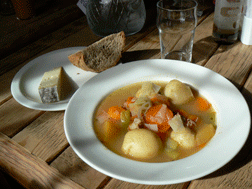
Lamb cawl at Hafan in Tregaron, photo by Scott W. Clemens
In modern Wales you may find contemporary interpretations of traditional dishes, alongside stylish fusion cuisine made with locally grown ingredients. For example, the one star Michelin-rated Plas Bodegroes, serves Pan Fried Fillet of Halibut (typically Welsh) with Ratatouille (typically French) and Gnocchi with Basil Butter Sauce (typically Italian). The Armless Dragon in Cardiff serves a single, large “Woodland Mushroom Ravioli with Welsh Cheese Cream, Fresh Herbs and Parsley Béchamel” — hardly something that the chef’s grandparents would have eaten. The recipe is inspired by international traditions that span both time and place, yet the ingredients are locally grown. On the same menu, however, you’ll find modern interpretations of Welsh Rarebit, and laver bread rolled into balls, alongside such standards as Welsh Black beef, venison, mullet and a traditional Root Vegetable Cawl. The latter is a comfort food you’ll find on menus from fancy restaurants to tiny pubs. A cawl (pronounced cowl) is a potluck soup that was, traditionally, replenished by leftovers and kept warm in the cauldron for returning miners as a quick snack before supper. Our favorite was a Lamb Cawl at Hafan, a tiny café at the Rhiannon Welsh Gold Center in Tregaron. It consisted of onions, leeks, whole new potatoes, rutabaga (called swedes in Britain), carrots and lamb, served with a side of homemade brown bread — nothing fancy, just pure comfort food from local ingredients. Whether dining at a fine restaurant, or holed up in the corner of a cozy pub, you won’t go away unsatisfied, and you’ll have an experience you can’t get at home.
The concept of the farm-to-table movement amused Chef Chris Chown of Plas Bodegroes. “Buying locally isn’t new; it’s not a movement; it’s what we’ve always done here,” he explained. “There’s no such thing as not ‘free range’ here, because we’ve never kept our chickens in cages. The woman who owned this house before us used to keep her sheep in the kitchen!” For decades millions of people have strayed away from those roots, embracing fast food with epidemic consequences. Today many of us are coming back to embrace the slow food ethic that Wales never eschewed in the first place.
From a culinary perspective, Wales has a lot to offer. With excellent restaurants, farm stores, more than 50 Farmers’ Markets and at least 44 annual food festivals, you could actually plan your trip entirely around food. There are reasons enough to visit Wales, and while our focus was culinary, you could just as well focus on literature, music, architecture, history, golf, fishing, hiking or culture: Wales has it all.
WHERE TO STAY / WHERE TO EAT
IF YOU GO TO WALES
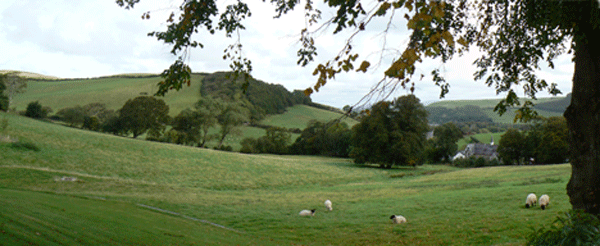
View from Conrah Hotel, Aberystwyth, Wales, photo by Scott W. Clemens
Listed from North to South
ST. ASAPH:
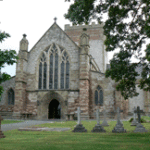
St. Asaph Cathedral, Wales, photo by Scott W. Clemens
The Oriel Country Hotel and Spa
Upper Denbigh Road
St. Asaph, Denbighshire, LL17 0LW
Tel: 01745 582716
Fax: 01745 686208
http://www.theorielhotel.com
mail@theorielhotel.com
Excellent restaurant serving a fusion menu (leaning perhaps toward Italian), an amazing wine list proudly put together by Food and Beverage Manager David Collins, and a fine selection of Welsh cheese. St. Asaph is home to the smallest Cathedral in Wales, where the North Walesnternational Music Festival takes place in late September.
CONWY:
The Castle Hotel
High Street, Conwy LL32 8DB
Tel: 0142 582800
Fax: 01492 582300
mail@castlewales.co.uk
http://www.castlewales.co.uk
The Castle Hotel incorporates two old coach houses, and has been recently renovated to modern standards. The restaurant is presided over by partner Graham Tinsley M.B.E., captain of the Welsh National Culinary Team.
BEAUMARIS:
Ye Olde Bulls Head Inn
Castle Street
Beaumaris, Naglesey, LL58 8AP
Tel: 01248 810329
info@bullsheadinn.co.uk
http://www.bullsheadinn.co.uk
The restaurant and brasserie specialize in all local produce, mostly from within a few miles of the restaurant on the Isle of Anglesey. Beaumaris castle is a short stroll away.
PWLLHELI:
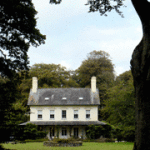
Plas Bodegroes Restaurant with Rooms, Pwllheli, photo by Scott W. Clemens
Plas Bodegroes Restaurant with Rooms
Nefyn Road
Pwllheli, Gwynedd LL53 5TH
Tel: 01758 612363
Whether you call it a country inn with a one-star Michelin restaurant, or restaurant with rooms, Plas Bodegroes is a beautiful 17th century country house, surrounded by grazing cattle and sheep, and a wood full of pheasants. The food is all local and superb.
ABERYSTWYTH:
The Conrah Country House Hotel
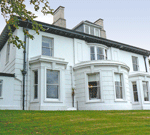
Conrah Hotel, Aberystwyth, Wales, photo by Scott W. Clemens
The Conrah boasts 17 individually designed bedrooms each with an en-suite bathroom. Many rooms enjoy fantastic views down the Ystwyth valley (ask for rooms 2, 3 or 4). Complementing the Hotel is their Michelin recognized restaurant. The Conrah is situated 10 minutes south of Aberystwyth on A487. Aberystwyth, a university town on the seaside, is known for its many fine shops, its National Library, yacht marina and long promenade beside Cardigan Bay.
BRECON:
The Coach House
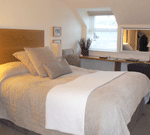
The Coach House, Brecon, Wales, photo by Scott Clemens
Orchard Street
Brecon, Powys
Tel: 0844 357 1304
http://www.coachhousebrecon.com
Within the shell of a 17th century coach house, the restaurant and rooms are furnished with modern, minimalist furniture, fine photography and indirect lighting. I highly recommend the restaurant, which serves large portions of beautifully prepared and plated food in an elegant setting. I had trouble getting the modern hot-water-on-demand fixture to work, which detracted from my overnight stay, though if you can sort that out you’ll find the accommodations comfortable.
CARDIFF:
Armless Dragon
97 Wyeverne Road
Cathays, Cardiff
Tel: 20382357
info@armlessdragon.co.uk
www.armlessdragon.co.uk
The Armless Dragon is a small, cozy restaurant with a relaxed family atmosphere, that serves both traditional and modern interpretations of Welsh dishes.
Woods Brasserie
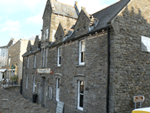
Woods Brasserie in Cardiff, Wales, photo by Scott Clemens
Pilotage Building
Stuart St.
Cardiff
Tel: 029 20492400
http://www.woods-brasserie.com
Set in the historic Pilotage Building on Cardiff’s waterfront, near the Millennium Performing Arts Center, Woods serves modern Welsh cuisine. All the food is locally sourced and (with the exception of the bread) is made on premise daily.
Radisson Blu Hotel Cardiff
Meridian Gate, Bute Terrace
Cardiff
Tel: 029 20 454 777
http://www.radissonblu.co.uk/hotel-cardiff
I can’t speak to the quality of the food, as I didn’t eat there. While I usually prefer a bed-and-breakfast with some character, this modern/avant guarde hotel offers comfortable accommodations with excellent service, and the location puts you on the edge of the shopping district, just a short walk to Cardiff castle and the modern art museum.
